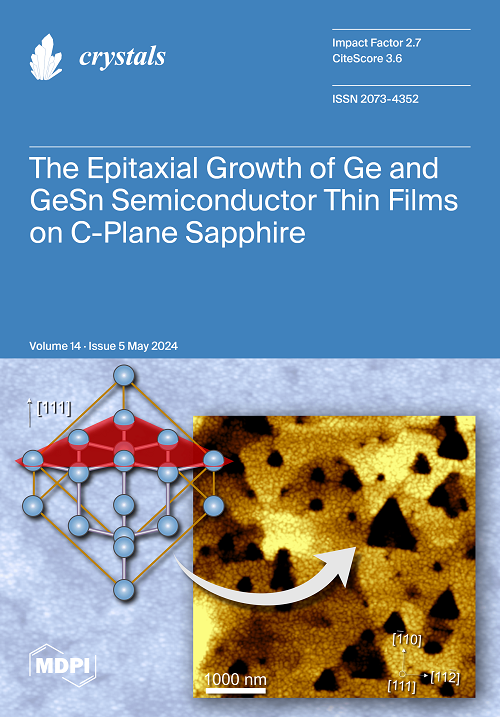非对称莪术配体反几何同色锌复合物的首个晶体结构
IF 2.4
4区 材料科学
Q2 CRYSTALLOGRAPHY
引用次数: 0
摘要
姜黄素因其公认的治疗特性而被广泛研究。这些分子通常会与金属发生衍生物反应,生成相应的同性金属复合物。目前已知有大量同孔对称姜黄素与生理必需金属的晶体结构,但缺乏以不对称姜黄素(或半姜黄素)为配体的同孔金属配合物的文献报道。非对称莪术配体与金属离子反应时,必须解决三个未知问题:(a)配位度(MLn);(b)空间几何;以及(c)配合物的构象性质(同步或反同步)。在此,我们报告了 5-羟基-1-(4-甲氧基苯基)己-1,4-二烯-3-酮的半莪术苷 Zn 复合物的反异构体结构。虽然核磁共振只显示了这一同色复合物的一组信号,但通过单晶 X 射线衍射测定法确定了其明确的立体化学结构,揭示了反六配位八面体 ML2 结构。本文章由计算机程序翻译,如有差异,请以英文原文为准。
The First Crystal Structure of an Anti-Geometric Homoleptic Zinc Complex from an Unsymmetric Curcuminoid Ligand
Curcuminoids are widely studied due to their well-recognized therapeutic properties. These molecules are often derivatized with metals, producing their corresponding homoleptic metal complexes. Numerous crystal structures of homoleptic symmetric curcuminoids with physiologically essential metals are known, although the literature lacks reports of homoleptic metal complexes of unsymmetric curcuminoids (or hemi-curcuminoids) as ligands. Three unknowns must be solved when an unsymmetric curcuminoid ligand is reacted with a metal ion: (a) the degree of coordination (MLn); (b) the spatial geometry; and (c) the conformational nature (syn or anti) of the complex. Herein, we report the structure of the anti-isomer of the Zn complex of the hemi-curcuminoid 5-hydroxy-1-(4-methoxyphenyl)hexa-1,4-dien-3-one. While the NMR shows only one set of signals for this homoleptic complex, the unambiguous stereochemistry was established through single-crystal X-ray diffractometry, revealing an anti-hexacoordinated octahedral ML2 structure.
求助全文
通过发布文献求助,成功后即可免费获取论文全文。
去求助
来源期刊

Crystals
CRYSTALLOGRAPHYMATERIALS SCIENCE, MULTIDIS-MATERIALS SCIENCE, MULTIDISCIPLINARY
CiteScore
4.20
自引率
11.10%
发文量
1527
审稿时长
16.12 days
期刊介绍:
Crystals (ISSN 2073-4352) is an open access journal that covers all aspects of crystalline material research. Crystals can act as a reference, and as a publication resource, to the community. It publishes reviews, regular research articles, and short communications. Our aim is to encourage scientists to publish their experimental and theoretical results in as much detail as possible. Therefore, there is no restriction on article length. Full experimental details must be provided to enable the results to be reproduced. Crystals provides a forum for the advancement of our understanding of the nucleation, growth, processing, and characterization of crystalline materials. Their mechanical, chemical, electronic, magnetic, and optical properties, and their diverse applications, are all considered to be of importance.
 求助内容:
求助内容: 应助结果提醒方式:
应助结果提醒方式:


